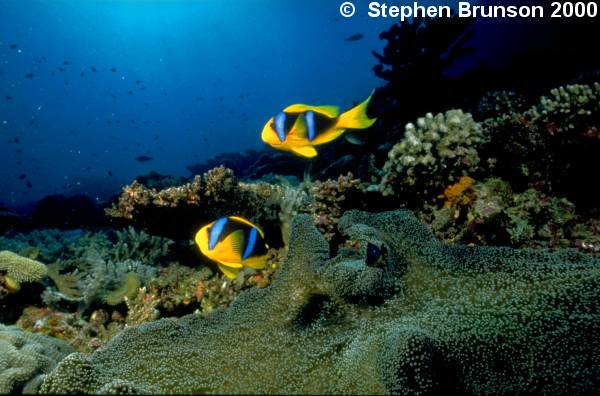








The Clownfish: Pomacentridae amphiprion
The Clownfish and the sea anemone have a symbiotic relationship. The clownfish attracts
predators to the anemone in which it lives. The predator fish in turn become the prey of the
anemone. After the anemone is finished, the clownfish claims the leftovers for itself. The
clownfish also chases away certain fish that are harmful to the anemone, such as the
butterfly fish. This fish preys on the anemone, biting off the ends of its tentacles. The
most common anemone to act as host to the clownfish is the large stoichactis species.
Through years of evolution, the clownfish has become immune to the poison of the anemone,
by covering itself in a protective mucous. If the mucous is washed away, the clownfish will
once again be vulnerable to the anemone's deadly sting.

Print Number - TF012
Limited Edition signed color photography for sale by Stephen Brunson
Clownfish belong to a group of small, brightly colored fish called damselfish. These inshore
reef dwellers have developed a curious and potentially deadly relationship with the sea
anemone.
Clownfish Statistics:
Size: 2 - 5 inches
Lifespan: 3 - 5 years
Number of Young: Eggs laid in large Batches.
Mating Season: Year Round in Tropical waters.
Diet: Leftovers from fish consumed by anemone; algae.
Distribution: Species are found in the Red Sea, the Coral Sea, the Indian Ocean,
and the tropical Pacific Ocean.
A. Percula is particularly common on Australia's Great Barrier Reef.
Habit: Usually lives in pairs with anemone.
BrunsonImages@att.net


















